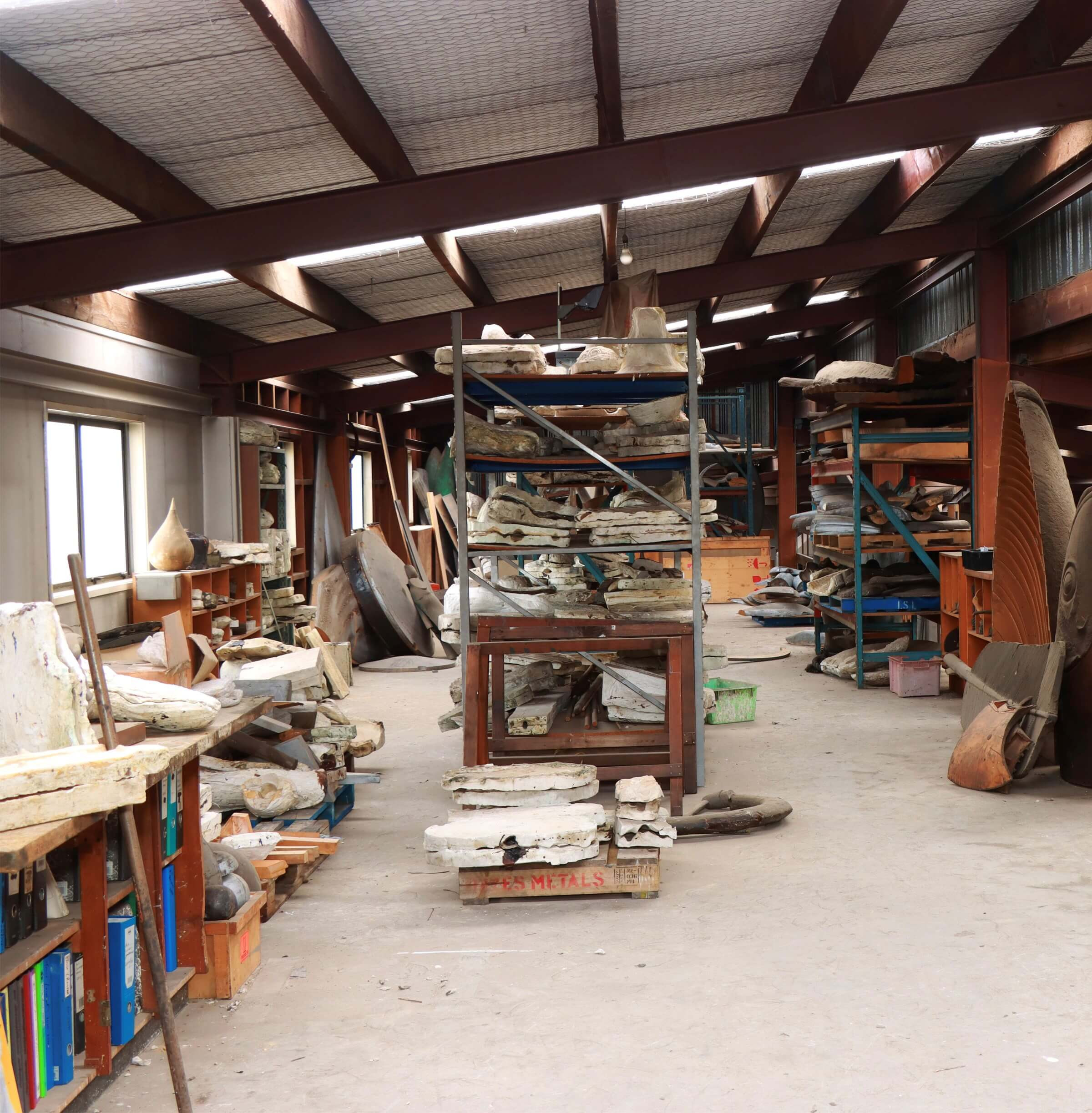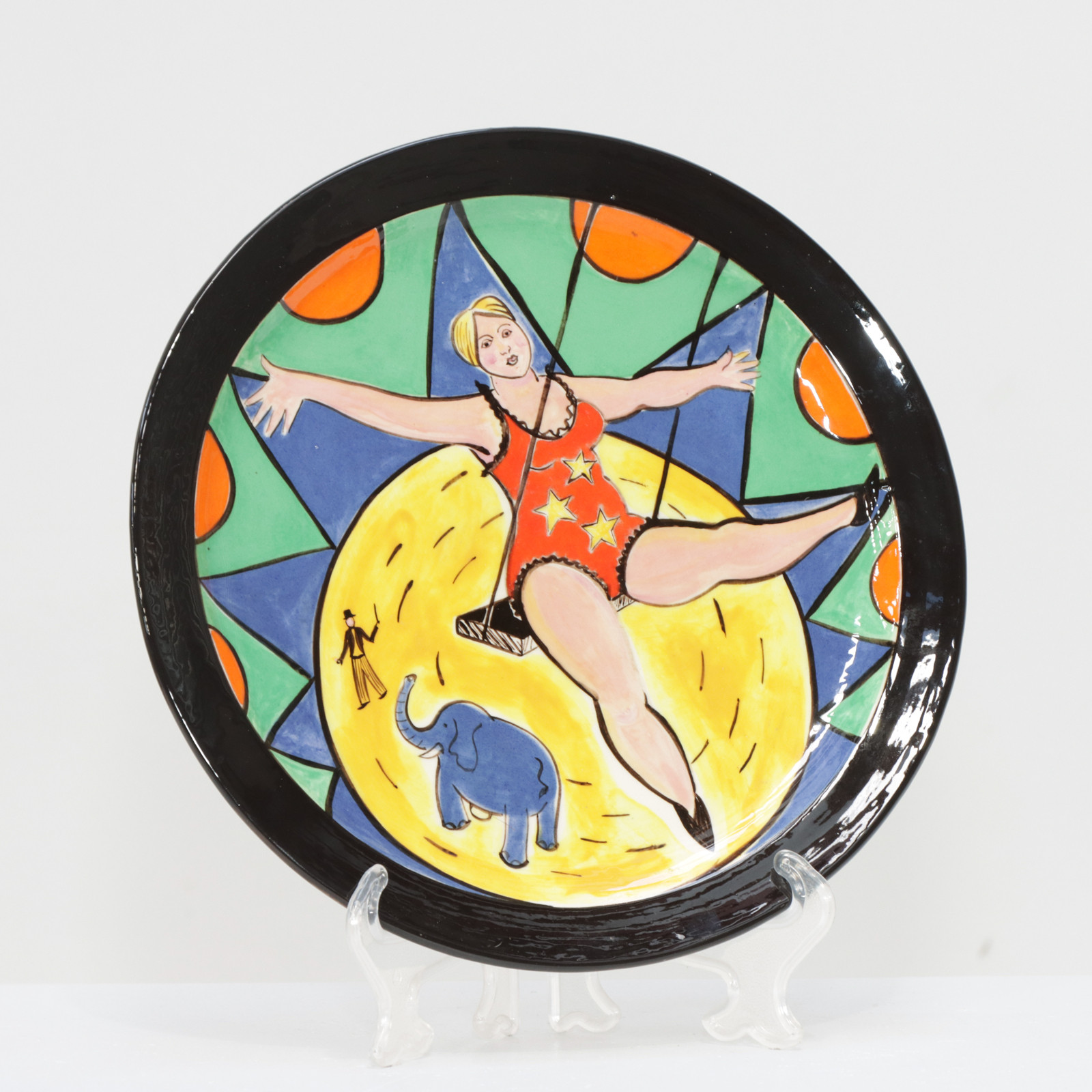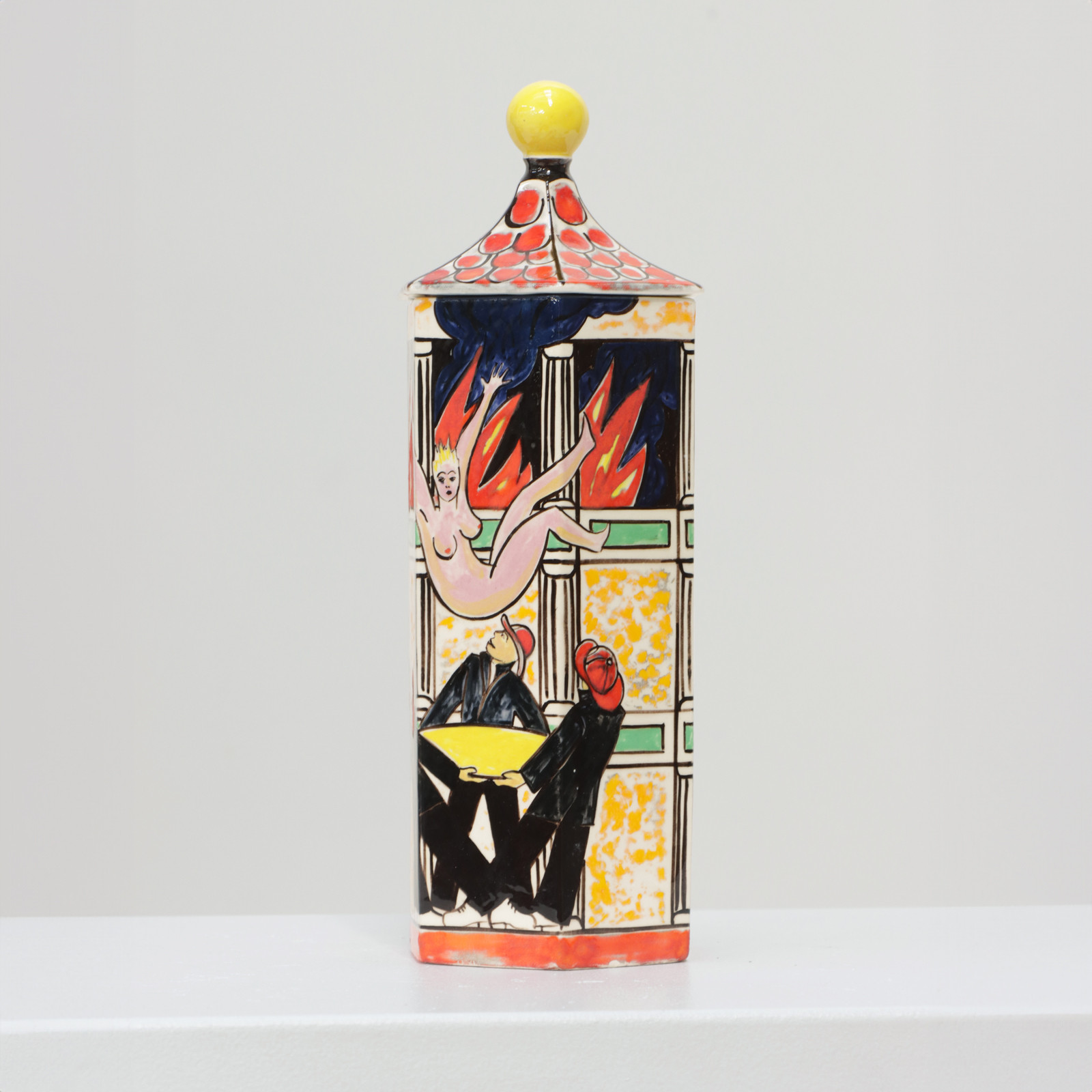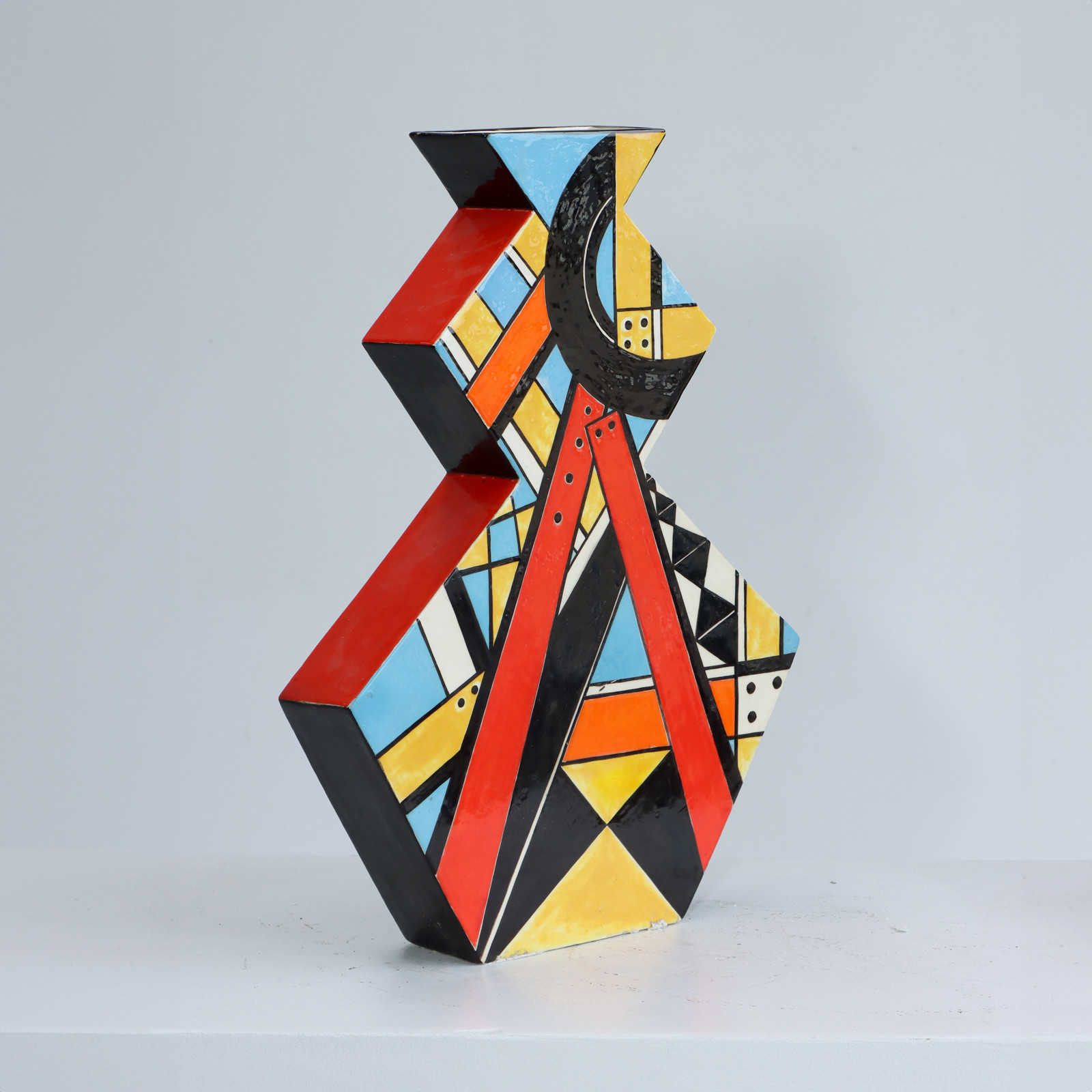Dibble Pottery
Dibble Pottery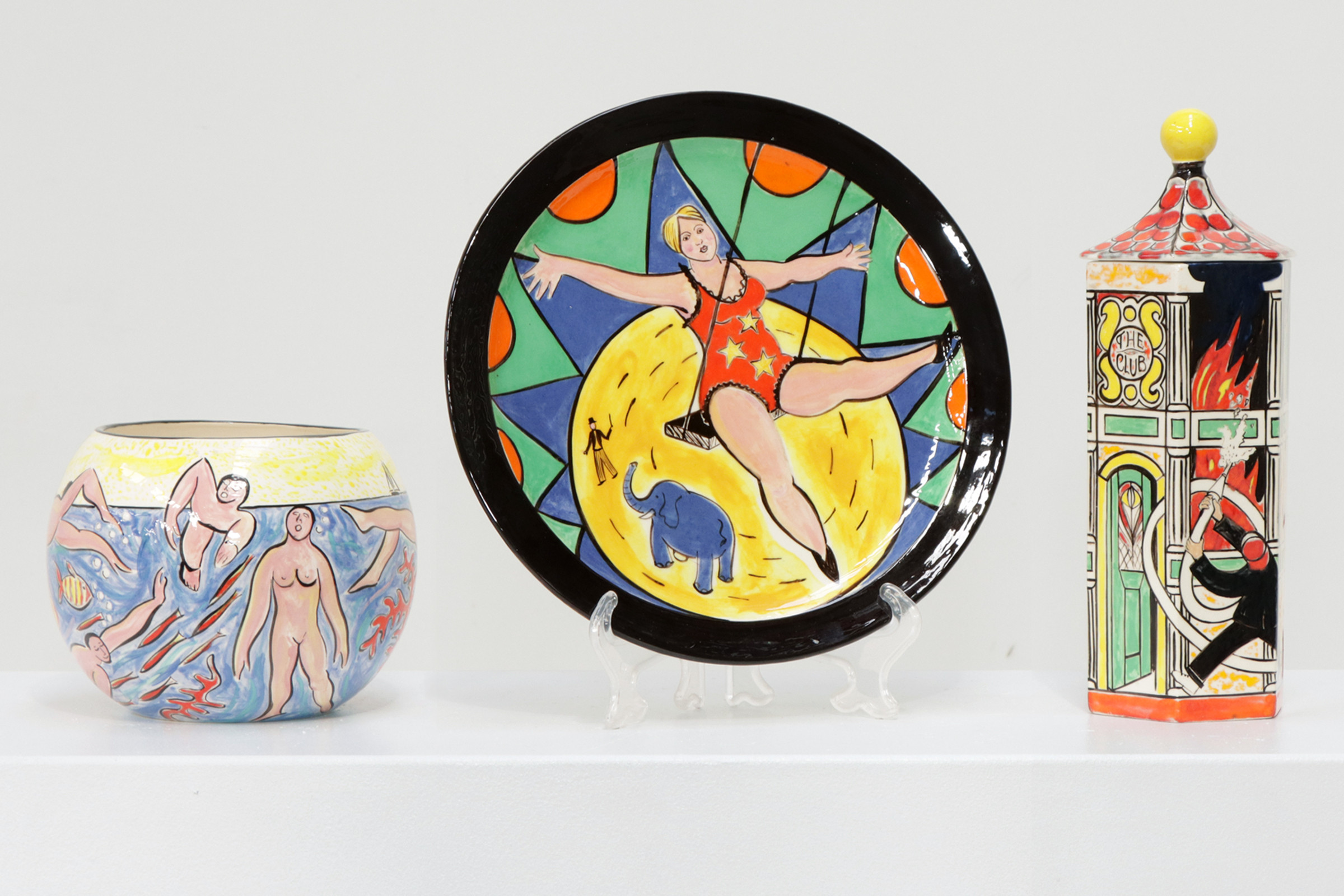
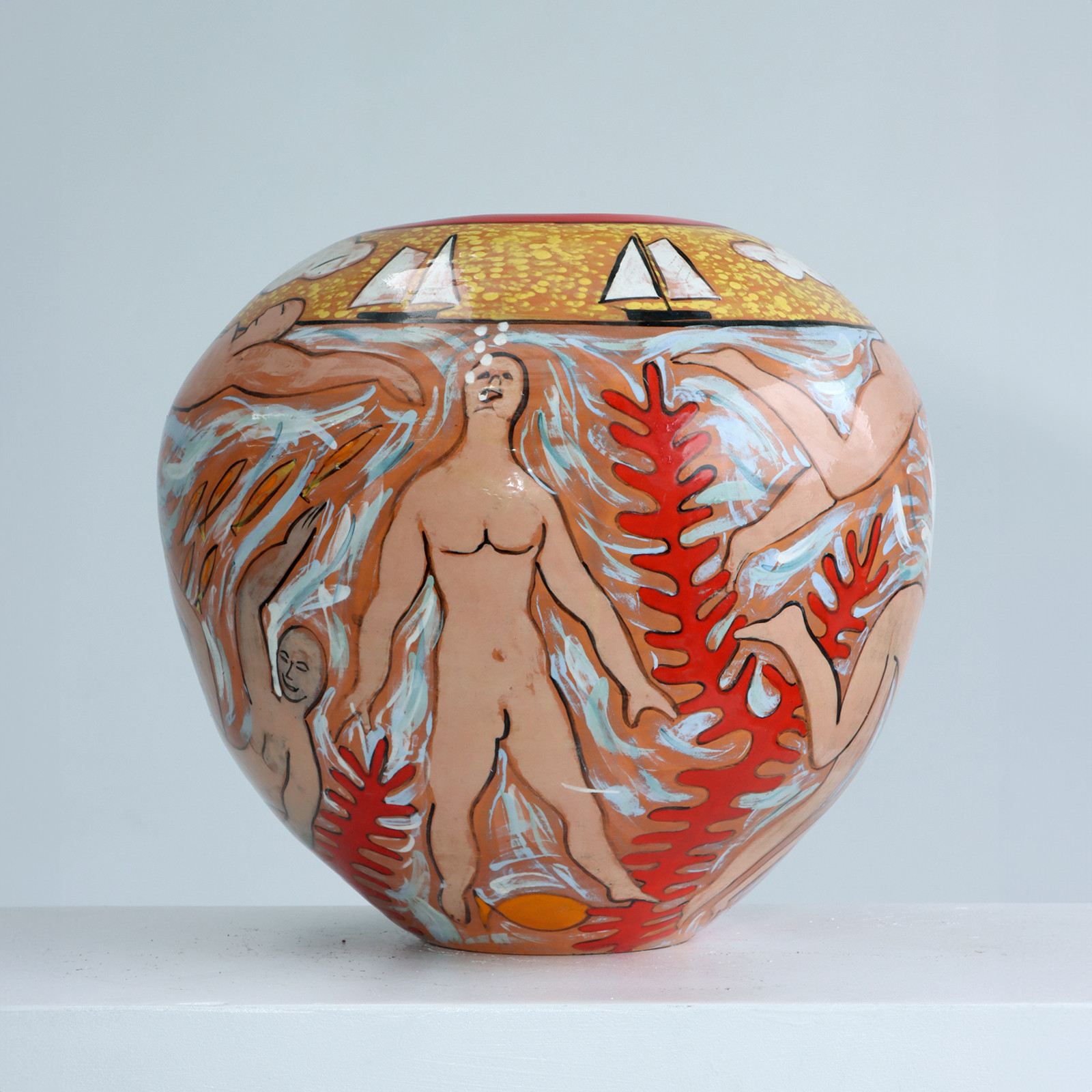
Paul’s immediate interest (in decorating pottery) was spurred from a love of the work of Clarice Cliff.
Dibble Pottery
Paul was the instigator of Dibble Pottery. It began when he was married to his first wife Patricia (Trish), nee Burke. This was the early 1980s, a period when New Zealand art was starting to come of age. There was also a strong emphasis on craft; spinners and weavers abounded as well as potters, with enthusiastic participation at all levels. Craft studios sprung up everywhere. This included small pottery studios where people could buy slip-cast greenware (unfired shapes made using liquid clay in a mould), decorate them using supplied glazes, and then the studio would fire them. The shapes they supplied were simple forms. Four were typical – a large ‘ginger jar’, a simple bowl, a plate, and a small ceramic box with a lid. People could come and get immediate results with minimal skills and without much investment required. In the main, the objects that were made in these studios were awful. Paul adopted this simple technology and used it to create something special.
Paul’s immediate interest was spurred from a love of the work of Clarice Cliff. At the time, the value of the now famous ceramicist was largely unappreciated. He would pick up pieces at garage sales and second-hand shops, often for just a few dollars. Although Paul moved several times when he first came to Palmerston North, he amassed quite a collection. The bright, cheerful colours appealed to him; and they were inexpensive decorative objects that were easily moved. Cliff’s vivacious style and her overlap with the work of artists of her time made them of great interest to Paul. The pottery was a way to explore creating his own new versions of Cliff works of the 1930s and 40s.
Trish was a highly creative woman, best known for her work in fashion design. She had serious health issues, and pottery gave her a focus, with a flexibility of working hours so it could be undertaken in periods when she was well. Her pottery was marketed mainly at the shop, “Real Time”, on Ponsonby Road, which was something of an icon in the 80s art scene.
Paul extended the slipware available at the time by creating his own shapes, the most dynamic being was a zigzag form influenced by Brancusi columns. He employed patternmakers who made wooden ‘positives’ that were then used to make the plaster moulds. He bought his own liquid clay to pour them. Sadly, Trish died in 1983. But Dibble pottery continued with Paul making pots, sometimes with friends or some of his students.
When Paul married Fran Dibble pottery was still part of the domestic routine, and another new branch of pottery was created. A new contribution was in the shift to decorating wheel thrown shapes instead of slipware. These were thrown by local potters like Tony Reardon, whose own pottery was of wood fired with natural colours, instead of the bright glazes in the Dibble pots. Stephen Schofield of “Rocket Pottery” also threw some of the pieces, as well as Joan McIntosh, (Fran’s mother), who had taken up pottery in retirement. There were a variety of places the pots were sold. Sometimes they featured in exhibitions – for instance at the New Vision Craft Gallery at the bottom of Queen Street. More often, they were presented as regular stock – the most successful venue being the Craft Council of New Zealand on The Terrace in Wellington.
Paul’s designs always had a strong spatial and conceptual strand. On one of the zigzag columns, he illustrated workers on a skyscraper building the pot itself, a design owing something to the work of the painter Fernand Léger. Swimmers swam around the circumference of spherical pots, and one work depicted a Jesus figure walking on water, a whale under the water acting as invisible support. His work often contained these elements of humour, and this was a part of the joy of the pottery. It wasn’t as serious a pursuit as sculpture or painting, so was a place to have some fun.
Decorating the thrown pots with bright colours and scenes did cause a degree of backlash at the time. The Yamada vision of pottery – natural forms and glaze effects – was somewhat sacrosanct amongst studio potters.
There was a mixture of events that led to the cessation of Dibble pottery. The government dropped importation tax in the 1990s, meaning that suddenly cheap ceramic goods rushed into the country at prices below the cost of pottery materials. But most significant was that Paul’s bronze sculpture had started to flourish, and the more serious pursuit of building up the foundry business began.

